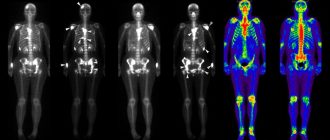Staphylococcus is a bacterium that can infect various tissues of the human body, including the prostate. There are both pathogenic and opportunistic types, i.e. the bacterium can live in the human body for a long time without causing any symptoms, but when the immune system is weakened, it can instantly cause complications. During the acute phase of infection, staphylococcus in the prostate causes a number of specific symptoms, but an accurate diagnosis is made after a diagnostic examination, consisting of an analysis of prostate secretions and a 3-glass urine sample. Antibiotics are used for treatment; their prescription depends on the type of infection. The best prevention is to maintain a high level of immunity.
Kinds
There are 27 species, 14 of which can live in humans, but the most common 4 of them are epidermal, golden, hemolytic and saprophytic.
Epidermal (Staphylococcus epidermidis)
As the name implies, the main habitat of Staphylococcus epidermidis is the skin and mucous membranes. With a decrease in immunity, it can cause complications, including: purulent infection of wounds and urinary tract, sepsis, endocarditis, conjunctivitis.
Golden (Staphylococcus aureus)
The most dangerous species for humans. It got its name for its ability to release golden pigment. It can cause suppuration and inflammation in absolutely any human tissues and organs. In some cases, infection occurs with a subspecies that is resistant to traditional antibiotics, which causes additional difficulties in treatment.
Hemolytic (Staphylococcus haemolyticus)
The hemolytic type of infection also causes purulent and inflammatory processes, but is usually localized in the urethra and bladder. The incubation period during which treatment is easiest is extremely short - only 2 days. After this, it spreads into the blood and destroys white blood cells, which further weakens the immune system and leads to extensive complications.
Saprophytic (Staphylococcus saprophyticus)
Once in the body, saprophytic staphylococcus causes acute cystitis and urethritis, after which it spreads throughout all the mucous membranes of the genitourinary system, which causes prostatitis and inflammation of other organs. More common in women than in men.
How does it enter the body?
The most common causes of staphylococcus entering the body:
- Unsafe sexual acts.
- Non-sterile medical procedures.
- Infection occurs when the infection moves from other organs.
The following can contribute to the activation of infection in the body:
- hygiene violations;
- hypothermia of the body;
- lack of an active lifestyle;
- bad habits;
- poor nutrition.
Symptoms
During an exacerbation of infection, the following symptoms are observed in the body:
- temperature increase;
- pain in the groin area;
- feeling of a full bladder, frequent urge to urinate, a small amount of urine released during the process;
- painful defecation;
- sexual disorders.
Diagnosis methods
Staphylococcus infection can be diagnosed by several methods:
- For microbiological analysis of prostate secretion and a 3-glass urine sample. Staphylococcus in prostate secretions allows you to accurately determine the species.
- Using a spermogram.
- It can be detected through blood, urine and stool tests.
Treatment
The method of treatment depends on the results of microbiological analysis of prostate secretions. In some cases, strains of infection may be methicillin-resistant, that is, resistant to beta-lactam-based drugs, which make up the majority of antibiotics. Treatment of these infections will be difficult.
There are frequent cases when infection occurs not only with staphylococcus, but also with other bacteria, for example, gonococcus and chlamydia. The diagnosis allows us to identify them and select appropriate antibiotics.
To cure an advanced form of staphylococcus, it is recommended to inject medications directly into the local lymphatic system. As a result, purulent cavities may appear, which are subsequently cleaned out surgically and treated with antiseptics.
Prevention
As preventive measures it is recommended:
- adhere to the rules of personal hygiene;
- refusal of promiscuous and unsafe sexual intercourse;
- healthy eating;
- active lifestyle.
By maintaining immunity at the proper level, the chance of prostate inflammation due to staphylococcus infection is sharply reduced.



